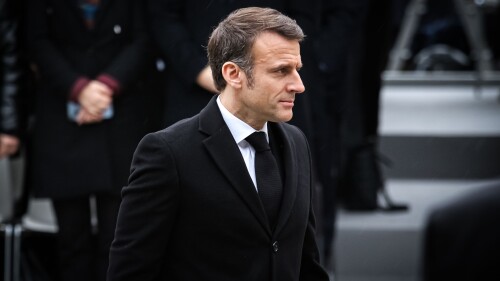German Chancellor Angela Merkel was a critic of “multiculturalism” and illegal immigration until a televised encounter with Palestinian teenage migrant Reem Sahwil in July 2015 prompted a reassessment. |
In 1950, there were about two million Muslims in Europe (U.S.S.R. not included): 0.2 percent of 350 million inhabitants. In 1990, according to conservative estimates, there were at least thirty million Muslims: 6 percent of 500 million. In 2010, forty-five million out of 530 million: 8.49 percent. The figures for 2019 were assumed to be well beyond fifty million: 9.26 percent of 540 million. All in all, the yearly rate of Muslim demographic growth in Europe, which was estimated at 4 percent thirty years ago, is now estimated at 8 percent. At the same time, the native, non-Muslim population is declining.
Another factor has amplified the demographic and cultural problems Europe faces. Muslims tend to be more family-oriented than Europe’s non-Muslims, and they have more children. A 2015 investigation of the religious beliefs of French teenagers gives us a glimpse of the future. According to the study, 38.8 percent do not identify with any religion, 33.2 percent identify as Christian, 25.5 percent as Muslim, and slightly more than 1 percent as Jewish. The same study reports that only 22 percent of non-Muslims who still claimed to belong to a religion (and only 40 percent of self-described Catholics) described their religion as “something important in their life,” against 83 percent of Muslims. These results suggest that if religion becomes important again in French society, Islam stands a better chance to attract converts than Christianity.
European elites have refused to address the social, cultural, and political implications of Muslim immigration.
European Liberals, Social Democrats, and the hard left have engaged for decades in what is best described as a complete denial of the dramatic increase of Islamic populations in Europe. The political establishment has refused to address its social, cultural, or political implications. They have entertained the Rawlsian-Habermasian delusion that liberal democracy and the mores of Western life will flourish in a multicultural environment. They are convinced that Islam is prepared to become another “identity” in pluralistic societies governed by “neutral” norms. Christian Democrats have not been too dreamily utopian, but they have been of two minds. And, as was the case with the European Constitution, when it comes to practical policies they eventually betray themselves and their constituencies.
In the summer of 2015, the rise of the ferocious ISIS caliphate in Syria and Iraq prompted a mass exodus into neighboring countries, particularly Turkey, and then toward the E.U. Most European countries realized that this migration would soon get out of control and took steps to close their borders. German Chancellor Angela Merkel, leader of the Christian Democratic Union, was at that time the most powerful person in Europe. She had made repeated statements about the failure of “multiculturalism.” She decided that the European public needed to be taught a lesson about the difference between legal and illegal immigration. To that end, her press office staged a meeting with schoolchildren in Rostock on July 16.
Rostock is no ordinary place. A city in Mecklenburg-Vorpommern, the poorest region in the former East Germany, it is marred with unemployment and high numbers of non-European “asylum seekers.” In 1992, it had been the scene of xenophobic violence. Among the youngsters Merkel met was a Palestinian teenage girl called Reem Sahwil. The young woman explained that her family, which had been in Germany for four years as “asylum seekers,” was facing imminent deportation. She asked the chancellor whether they could be allowed to stay. True to her “Empress” image, Merkel rejected the request: “You are a very nice person but you know that there are thousands and thousands of people in Palestinian refugee camps in Lebanon and if I say ‘you can all come’ and ‘you can all come from Africa,’ we just can’t manage that.” Anybody would have predicted that the girl would burst in tears upon such words—that is to say, anybody but the chancellor and her advisers, who panicked when they realized that the whole episode looked like an epitome of German insensibility and arrogance.
Chancellor Angela Merkel’s about-face on immigration was on display in her annual New Year’s speech at the end of 2015, broadcast by German state television with Arabic subtitles. |
Just six weeks later, Merkel reversed her stand, regarding both the Sahwil family and the “thousands and thousands” waiting for asylum and economic opportunity in Germany—more than one million people, mostly single young men, as it turned out. She issued an open welcome. And she suggested that all European Union nations should do likewise, in proportion to their populations. It didn’t matter that the young Reem Sahwil’s dream, as she explained to the press, was in fact to “return home . . . once Israel is no longer there, rather only Palestine.”
Merkel’s about-face was applauded hysterically by the ruling class and widely rejected by everybody else. It set in motion a chain of events that neither Merkel nor anybody else could control.
Michel Gurfinkiel is the Founder and President of the Jean-Jacques Rousseau Institute, a Ginsburg-Milstein Fellow at Middle East Forum, and editor emeritus of Valeurs Actuelles.









